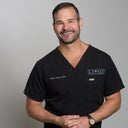Posted underTummy Tuck q&a
Circular tummy tuck and lower body lift the same thing? What does it consist of?
Answers (6)
From board-certified doctors and trusted medical professionals
Dr. Young R. Cho, MD, PhD

Dr. Young R. Cho, MD, PhD
Board Certified Plastic Surgeon
Answer
Dr. Jeffrey A. Sweat, MD

Dr. Jeffrey A. Sweat, MD
Board Certified Plastic Surgeon
Answer
Dr. Austin Hayes, MD

Dr. Austin Hayes, MD
Board Certified Plastic Surgeon
Answer
Dr. Jourdan Gottlieb, MD
Dr. Jourdan Gottlieb, MD
Board Certified Plastic Surgeon
Answer
Dr. Fred Suess, MD (retired)
Dr. Fred Suess, MD (retired)
Board Certified Plastic Surgeon
Answer
Dr. Peter Fisher, MD (retired)
Dr. Peter Fisher, MD (retired)
Board Certified Plastic Surgeon
Answer
More Tummy Tuck Questions
See all Tummy Tuck Q&AWE SEND PRETTY
EMAILS
What’s trending? Who’s turning heads? Which TikTok myths need busting? We’ve got you. No fluff, no gatekeeping—just real talk. Get our free, unfiltered newsletter.